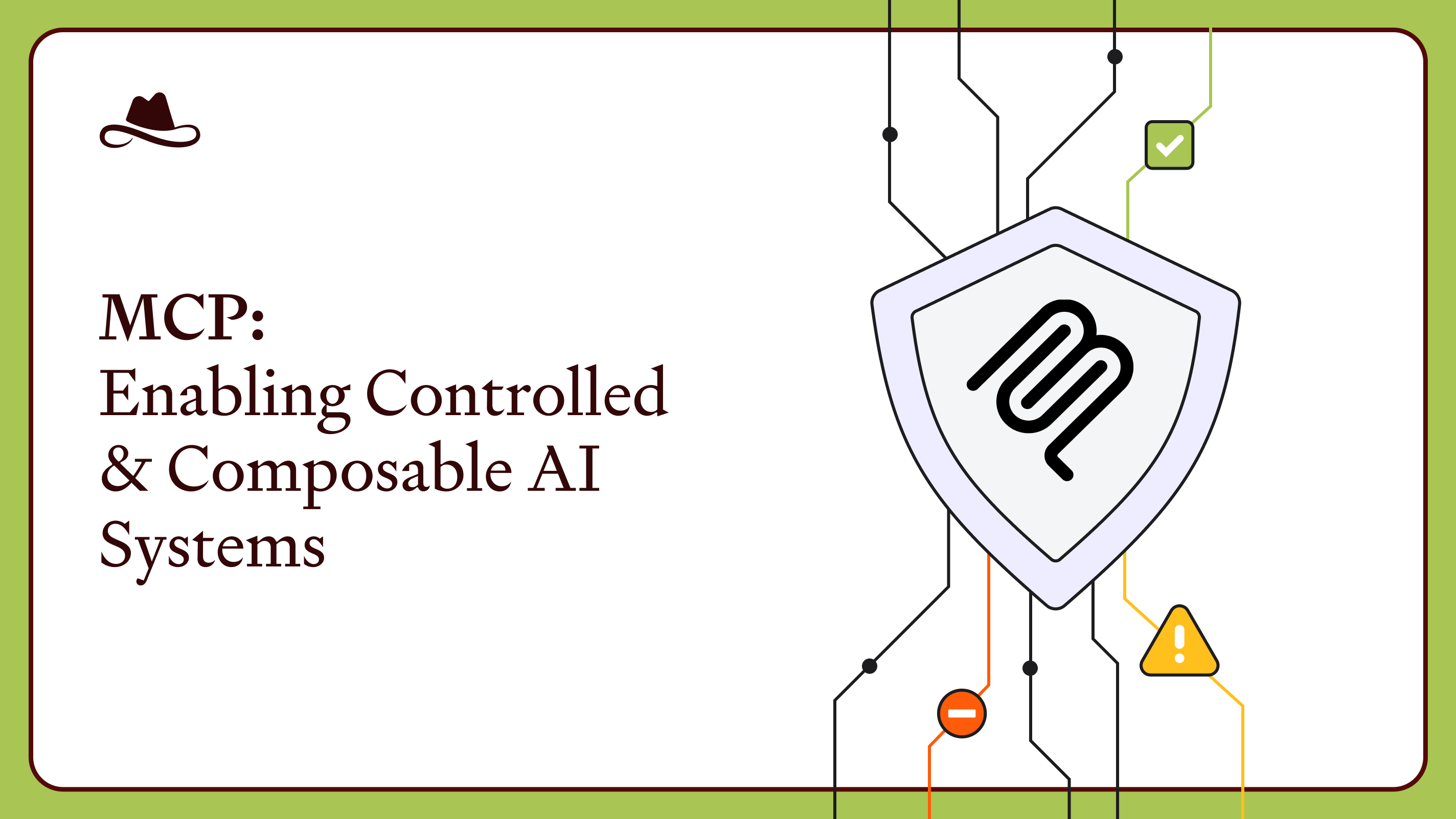By the time you finish reading this sentence, ChatGPT will have answered millions of queries from millions of users around the world. Most of those interactions will go without a hitch: the user will take the output to make their lives easier.
But some of these chats may go wrong - leading to a security incident that nobody saw coming. As ChatGPT settles into being just another part of every organization’s digital furniture, it’s crucial for leaders to understand the risks and take steps to prepare.
In this article, we’re taking a close look at ChatGPT, how it works, and the most critical cybersecurity threats you need to keep on your radar.
How does ChatGPT work?
ChatGPT is a large language model (LLM) developed by OpenAI. It operates on a transformer-based architecture designed to understand and generate human-like text. It is trained on a vast dataset to learn language patterns, syntax, and context during a process called pre-training, followed by potential fine-tuning for specific tasks. The model receives periodic updates to improve accuracy and functionality. These capabilities make ChatGPT an effective tool for a wide range of text-based applications. The fact that it is only getting better with time keeps it at the top of everyone’s mind, from marketers to developers.
However, as with any new technology, large language models like ChatGPT bring a new category of LLM cybersecurity risks, ranging from social engineering to malicious code.
Here, we’re taking a look at the ones that are most relevant for the C-Suite concerned with avoiding nasty security incidents.
Cybersecurity risks of ChatGPT
To effectively manage cybersecurity risks associated with using ChatGPT, it is essential to understand the key areas of vulnerability. The data table below categorizes these risks, providing focused insights into each category:

Data Theft
Any cloud-based AI service involves some level of risk when it comes to sensitive data. Malicious actors can intercept this data during transmission or from the server itself. When personal data, trade secrets, or financial data finds its way into the model, proper encryption and security are crucial to keeping it safe.
Malware & Malicious Code
With more and more developers using ChatGPT to help generate or analyze code, there's a risk that the AI could create harmful code. Exposure to malicious datasets increases this risk. Manipulative inputs could be another attack vector, turning users into unwitting executors of bad code.
Data Privacy
AI platforms like ChatGPT transmit data to servers for processing. This raises privacy concerns: who has access to this data? And how are they using it? For example, sensitive information could be inadvertently stored, logged, or used in ways not initially intended by the user. This could violate privacy policies and regulations like GDPR or HIPAA.
Critics of ChatGPT were quick to point out that this risk had actually materialized when a bug was discovered in redis-py. This came about due to complex interaction within ChatGPT’s asynchronous processing environment, specifically involving the Redis client library (redis-py) and Asyncio. This bug was linked to the management of data requests and responses. When a user canceled a request after it had been queued, but before processing, the system failed to properly handle the aborted request. This mismanagement allowed the response meant for the request to contain residual data, which the next user in line received.
IP Concerns
Intellectual property (IP) could be at risk if proprietary data, algorithms, or business processes are shared with AI systems like ChatGPT. There is a risk of exposure to third parties, intentional or accidental, which could result in loss of competitive advantage or even legal challenges if IP is not properly protected or if the terms of service do not adequately safeguard user data.
Ransomware
While ChatGPT itself is unlikely to create ransomware, integrating it with systems that have security vulnerabilities could potentially expose those systems to ransomware attacks. For instance, if ChatGPT is used to automate responses in a security environment and is compromised, this could serve as a gateway for ransomware delivery by providing misleading information or instructions.
ChatGPT Use Cases for Cyber Security
Despite these risks, ChatGPT has become a powerful tool in cybersecurity itself. Security professionals use it to enhance security measures, streamline processes and improve vulnerability detection.
Here is a snapshot of the growing list of cybersecurity use cases for ChatGPT:
De-bug Code
Programmers use ChatGPT to automatically review code, spot bugs, and even help with remediation. Given that debugging can absorb around 27% of developers’ time, ChatGPT is an increasingly attractive option for time-pressed developers who have bigger fish to fry.
Generate Security Code
Beyond debugging, ChatGPT also helps developers generate secure code - from patterns to entire scripts. For app developers especially, this speeds up the entire SLDC, integrating security best practices directly into development.
Perform Network Mapper Scans
ChatGPT can also automate network mapper scans, providing real-time insights into network security. It can analyze network traffic and structures to help security teams identify unauthorized devices or potential breaches.
Identify Flaws in Smart Contracts
ChatGPT has even made its way into the blockchain. Smart contracts are crucial in blockchain applications, but they can contain vulnerabilities. ChatGPT can be trained to scrutinize smart contracts for common coding mistakes or exploitable issues.
Filter out Security Vulnerabilities
Prioritizing vulnerabilities is a crucial but time-consuming task that ChatGPT can expedite by processing vast amounts of data to separate what’s critical and what isn’t. Organizations can use this output to allocate resources better, addressing true vulnerabilities first.
Big Data Analysis
ChatGPT’s Advanced Data Analysis can run Python code, create visualizations, and directly interact with uploaded data files like CSVs. This integration allows for sophisticated data analysis, including the ability to solve mathematical problems and generate actionable insights. The feature also addresses key concerns such as data privacy and integrity, which are crucial for reliable big data analysis.
Threat Analysis
Finally, ChatGPT can simulate potential security scenarios or analyze historical data to predict and mitigate future threats. This proactive approach helps refine security strategies and prepare better defenses against potential cyber attacks.
While using ChatGPT, follow this step-by-step approach to ensure your data stays secure:
Initial Security Measures
- Antivirus Software: Install robust antivirus software to detect and eliminate potential threats.
- Firewalls: Use firewalls to prevent unauthorized access to your network.
- Regular Software Updates: Ensure that all software is up-to-date to protect against the latest vulnerabilities.
Enhanced Security Practices
- Strong Password Policies: Implement strong password guidelines to secure accounts.
- Multi-Factor Authentication (MFA): Use MFA to add an additional layer of security through multiple forms of verification.
Advanced Network Security
- Network Detection and Response (NDR): Deploy NDR systems to monitor and respond to threats in real-time, ensuring enhanced security.
- Secure API Management: Manage APIs securely to prevent unauthorized access and data breaches.
- Encrypted Communication Channels: Use encryption to protect data in transit from interception or tampering.
How can Lasso help ensure cybersecurity when using ChatGPT
All of these measures are a good foundation, but they’re only the beginning. These conventional cybersecurity approaches are not able to fully secure organizations against ChatGPT cybersecurity risk on their own.
Companies like Lasso Security are leading the way in providing niche LLM cybersecurity tools that address the growing list of risks and threats that affect LLMs like ChatGPT. LLM cybersecurity and GenAI TRiSM (Trust, Risk & Security Management) solutions exist to fit every organizational need when it comes to securing ChatGPT usage and applications.
.avif)
Get in touch to learn more about Lasso and how we’re securing future-oriented companies as they step boldly into the GenAI era.
Lasso Security provides advanced insights and automated responses to potential security incidents, strengthening your data protection strategies so that you can get creative with the world’s favorite chatbot with complete peace of mind.
.avif)
.avif)




